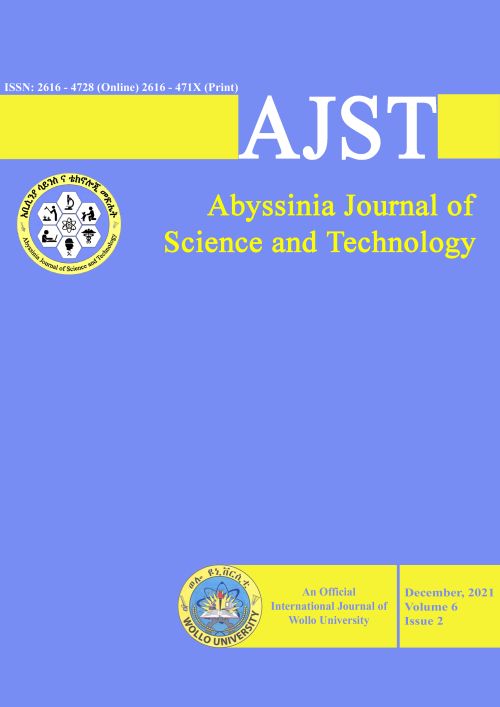Main Article Content
Assessment of Hygienic Practices and Microbial Quality of Meat at Slaughterhouses and Butcher’s Shops in West Hararghe Zone, Ethiopia
Abstract
The objective of the study was to assess the hygienic practices and microbial quality of meat at slaughterhouses and butcher’s shops in West Hararghe Zone, Oromia, Ethiopia. A cross-sectional study design was used during April 2019 and August 2019 with a sample size of 52 study participants who workedin a slaughterhouse and/or meat retailing outlets in Chiro and Hirna towns. The data were collected using semi-structured questionnaire followed by laboratory analysis. The safety of meat products was determined by counting Total Viable Bacterial, Total Coliform, Enterobacter, and Staphylococcus spp. The result of this tudy showed that meat handlers were mostly uneducated working without protective cloths. Slaughtering and post slaughtering process in many premises were unhygienic, which causes a high risk of crosscontamination and is hazardous for public health. Microbial load both in slaughterhouses and butcher’s shops were higher than the recommended standards. Overall the mean total bacterial counts, coliform counts, Enterobacter and staphylococcus spp. values were 7.01±0.25 log10CFU/cm2, 6.02±0.29 log10CFU/cm2, 6.950±0.16 log10CFU/cm2 and 6.36±0.2 log10CFU/cm2, respectively. This might be due to crosscontamination through poor personal hygiene, lack of demarcation between dirt and clean met products in the slaughterhouses, evisceration, and dressing on an unhygienic floor.






